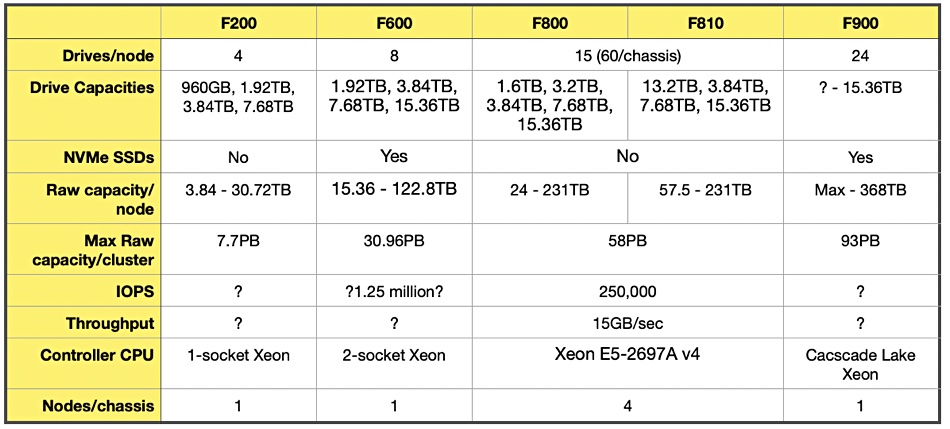Dell EMC has launched a faster all-flash PowerScale system with 65 per cent more NVMe capacity per node. It has added a general speed boost with an OS upgrade, and claims to have made PowerScale quicker in the Google cloud as well.
The scale-out filer PowerScale product line, previously branded Isilon, has all-flash, hybrid and archive nodes. Its OneFS operating system provides inline compression and deduplication. We understand it supports mixed system clusters of up to 252 nodes.
Dell EMC’s John Shirley, VP of Product Management, Unstructured Data Solutions, called the F900 a “workhorse” for “modern high performance data lakes.” He added that users could “add in new F900 nodes or replace old nodes with new PowerScale nodes.” These have “compatibility with existing Isilon clusters, thanks to the PowerScale OneFS operating system.”
The F900 uses a 24-slot, 2U chassis, which has a 368TB maximum raw capacity using 15.36TB SSDs. It is controlled by dual-socket Cascade Lake generation Xeon processors. It supports Nvidia’s GPUDirect server CPU-bypass IO technology to feed data faster to GPUs.

The existing F800 and F810 have more capacity in their 4U chassis, at 924TB, than the F900. However, there are four nodes in the F800/810 chassis, meaning 231TB/node. That is why the F800 and F810 maximum raw cluster capacity is 58PB while the new F900 goes up to 93PB, 60 per cent more.
We tabulated the different F-series PowerScale systems, although there is missing performance information for some:

Dell competitor Qumulo has a P368T all-flash filer also using a 2U by 24-slot chassis, also with 368TB of raw capacity. It uses 2 x Intel Gold 6126 CPUs rated at 2.6GHz, with 12 cores. Potentially the F900’s Cascade Lake processors may be faster but your mileage may vary.
OneFS
Dell EMC has also upgraded the PowerScale OneFS OS to v9.2, increasing performance for the F200 and F600 systems. Shirley claims it “speeds up PowerScale F200 (edge/entry nodes ) by 25 per cent and F600 (all-NVMe compact performance nodes) systems by 70 per cent for sequential reads.” Since we don’t know the starting numbers for these increases, we can’t speculate about what that means in deliverable performance terms.
V9.2 OneFS has remote direct memory access (RDMA) support for applications. Shirley said users with network file systems (NFS) benefit from accelerated GPU-powered applications, significantly higher throughput performance and low latency communication, especially for single connection and read intensive workloads.
PowerScale for Google Cloud is now available with all-flash Tier 1 Agile configurations. Shirley said these deployment options “offer a lower entry point with reduced minimum capacities and shorter commitment terms.”
We will be interested to see how PowerScale systems using GPUDirect compare to DDN, Pavilion Data, VAST Data and WekaIO systems in throughput terms.








